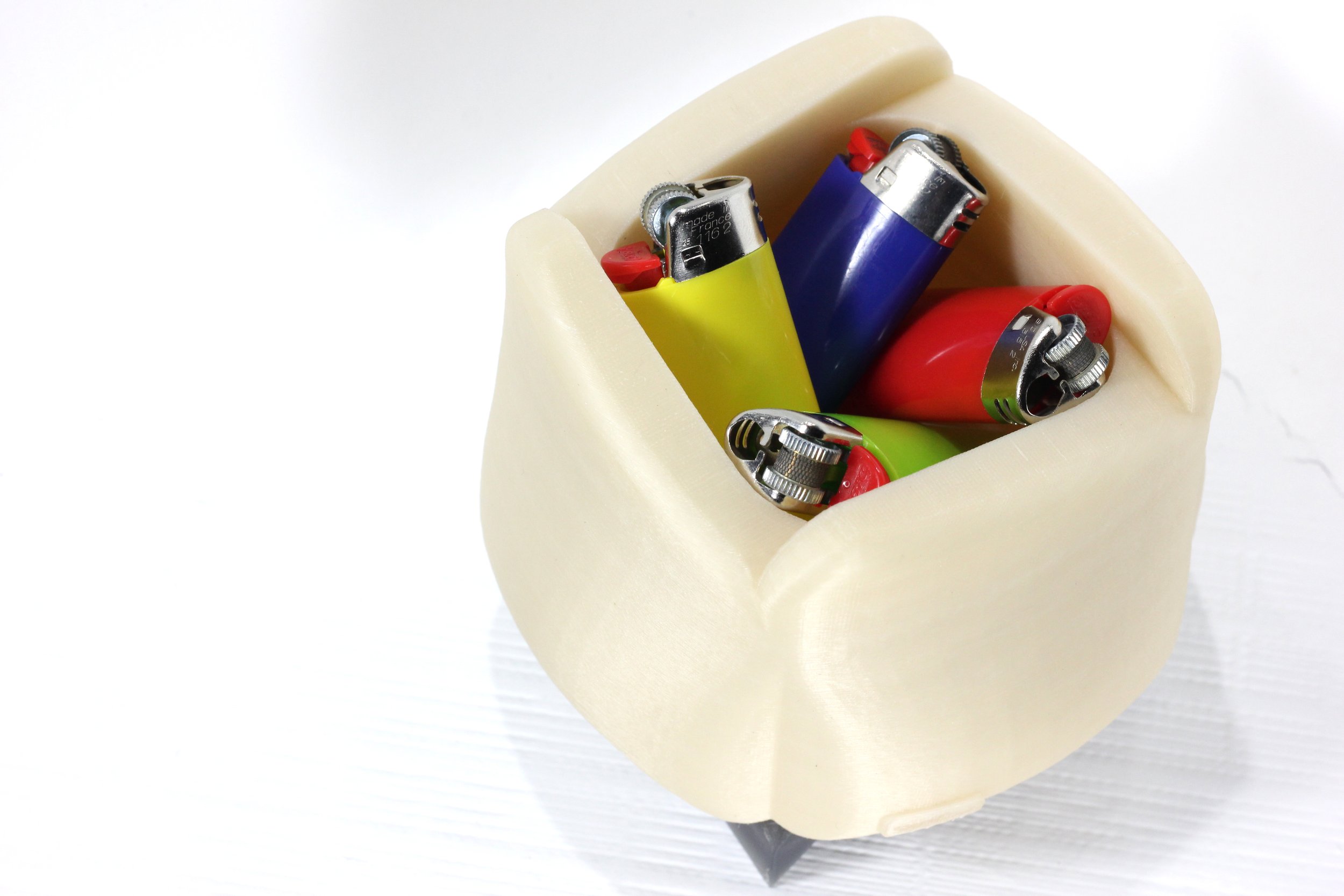Production Statement: This product is made to order. Please allow at least two weeks from purchase for manufacture and shipping. Each unit is inspected thoroughly during and after production to assure it meets operational, aesthetic, and safety standards. Production processes include 3D Printing, hand, and machine finishing. These processes create a small amount of irreproducibility due to their, at times, chaotic nature. Please be aware the product you receive may not look exactly like the product photos shown and may contain small defects or irregularities within reasonable limits. At Sytkai we believe this adds character and uniqueness to each piece. It also falls in line with our approach to environmentalism and waste reduction.
Food Safety: The vessel is printed from Nonoilen® from Fillamentum, based in Czech Republic. The material (pre-production) is rated safe for food contact by the manufacturer, however no documentation from US regulatory bodies declaring this material as "food-grade" has been discovered at the time of writing. However, increased measures were taken to improve existing safety for food-based applications of the product. The vessel is printed with non-leeching stainless steel nozzle coupled with a PTFE-free all metal hot end assembly. The material has a rated temperature resistance up to 110°C, however until more testing is completed, dishwasher cleaning is not recommended to preserve the life of the product. WARNING: The fabrication process of 3D printing creates regular grooves within the surface along the vertical axis of the product known as layer lines. The inner crevices of these layer lines can harbor bacteria that will require more effort to clean or sanitize than an outright smooth surface. Use at your own risk for food and drink related applications.
The base, If made with Nonoilen®, will sport identical properties and preparations as the vessel. The base from translucent silver HTPLA is printed with a brass nozzle which nixes it's food safety rating. The temperature resistance of the base peaks at 45-55°C (113-135°F) without deformation. At the time of writing, testing is ongoing to properly anneal the HTPLA base component in order for it to reach an improved temperature resistance 88°C (190°F). If your product includes this enhancement, it will be included in the "User Notes" included in the package.
Environmental Impact:
Status: Innovative - This product seeks to use improved materials to use in lean production with traditional methods. Currently, no parts of this product reduce existing waste upon earth or produce beneficial byproducts for the environment. This design may will revisited to achieve such goals in the future.
The vessel is made from 3D Printed Nonoilen®. This material is designed to be produced using zero petrol products (non-oil-en, clever huh?), opting for 100% renewable bio-based sources. Nonoilen® is rated to biodegrade three times faster than traditional PLA in an industrial composting environment due to its polylactic acid/polyhydroxy butyrate chemical blend. This material is not designed to biodegrade in nature (not very fast anyway) and must be composted under industrial conditions. The base is made from Protopasta HTPLA which sports at least a majority polylactic acid composition with additives likely introduced to improve color and printability. polylactic acid, while in it's pure state is known to be biodegradable under industrial conditions, cannot biodegrade in nature in any short amount of time. additives to the specific formulation are at the time of writing, unknown to production and thus unsure of possible effects it may have to one's compost solution if such is attempted. At the time of writing, the capability to directly recycle scrap and throwaway PLA and Nonoilen and spin it into new and usable 3D Printing filament is being developed at Sytkai. Both materials normally are not accepted by traditional plastic recycling facilities. If you decide to part ways with your product at any point in it's life cycle, you may send it back to us where it can be recycled and potentially undergo a new life as another Sytkai product or will be useful as prototyping material to iterate further designs of other products. Please contact us for more information regarding that process
Shipping materials will make use of the least environmentally destructive and recyclable materials realistically available to production.
All parts of this design were printed on a desktop 3D printer, made to order. The only sitting stock that exists are the iterations of the design in the prototyping phase. the printer runs with a 250W power supply running on traditional grid power in the eastern United States. Scrap and waste material is collected and saved in order to be ground and respun into recycled filament, which will then be used directly in future Sytkai products or for use in product prototyping
Notes from the Designer: form 01 was inspired by a complementary juxtaposition of sharp geometric elements providing a base for a softer, organic form to expand upon. much like hard fundamentals of any particular area of study providing the infrastructure for a more expansive and robust body of knowledge to build upon and interact with other things in the world. Or like a hardy plant before it blooms its flowers in the spring. Kinda looks like a flower, don't it? Consciously unintentional, i swear. Secondary design considerations came from the desire to create a modular product after initial prototypes of the cup component were created. The "cup" felt really nice and stood well on its own. i wanted to give people the option to use it alone if desired. This gave us the added benefit of vastly reducing production waste by printing both vessel and base separately.
- Lead Designer, Myles Poole









